25 Flavorful African Rice Dishes Every Food Lover Needs
African rice dishes represent a vibrant culinary tradition that reflects the continent's rich cultural diversity and agricultural heritage.
Ingredients sourced from local landscapes transform simple grains into extraordinary meals bursting with flavor and nutrition.
Regional cooking techniques showcase remarkable creativity in preparing these beloved staples that connect communities across different environments.
Generations of home cooks have perfected methods that elevate rice beyond mere sustenance into an art form celebrating local ingredients and generational wisdom.
Spices, herbs, and unique cooking approaches distinguish these dishes from global counterparts, creating memorable dining experiences that tell stories through every bite.
Cultural significance runs deep in these recipes, representing more than food but embodying shared histories and familial connections.
Farmers, chefs, and home cooks collaborate in maintaining these gastronomic traditions that nourish both body and soul.
Here are 25 remarkable African rice dishes that will tantalize your taste buds:
Great African Rice Dishes You’ll Want to Try
Across Africa, rice takes on new flavors and personalities in every country. Spiced, sauced, or mixed with vegetables and meats, these rice dishes bring a world of taste to the table.
Jollof Rice
Jollof rice dominates West African cuisine as a spicy one-pot rice dish originating from Senegambian traditions.
Nigerian and Ghanaian cultures fiercely compete over who makes the best version of this iconic meal.
Tomato-based sauce gives the rice its signature deep red color and intense flavor profile.
Cooks prepare the dish by simmering rice with tomatoes, tomato paste, onions, and signature spices like nutmeg and African basil leaf.
Protein options range from chicken and beef to fish, allowing versatile meal combinations.
Coconut milk sometimes enhances the sauce's richness and complexity.
Traditional cooking methods involve slow-cooking rice until it absorbs all sauce flavors, creating a perfectly seasoned one-pot meal.
Waakye
Waakye is a hearty Ghanaian rice and bean dish celebrated for its complex flavor profile and versatile nature.
Rice and black-eyed peas simmer together in a distinctive cooking process that gives the dish its signature dark brown color and rich taste.
Street vendors and home cooks across Ghana prepare waakye with great skill, often serving it with an array of delicious side items like fried plantains, boiled eggs, and spicy shito sauce.
Talia, a spaghetti-like garnish, and gari foto, a cassava-based mashed sauce, frequently accompany the dish.
Northern Ghanaian origins trace back generations, though waakye has now become a national staple enjoyed throughout the country.
Breakfast and lunch crowds favor this protein-packed meal that can be customized with numerous accompaniments.
Its popularity stems from affordability, nutritional value, and incredible taste that reflects Ghana's rich culinary traditions.
Rozz Meammar
Rozz meammar signifies a luxurious Egyptian rice specialty slow-baked with creamy ingredients and chicken broth in a traditional clay pot called a bram.
Egyptian families treasure this rich side dish during special gatherings and festive celebrations as a comforting alternative to plain white rice.
Rich milk and butter combine with sour cream to create a smooth, velvety texture that elevates simple white rice into a memorable experience.
Home cooks layer ingredients carefully before baking the mixture to achieve a golden, slightly crispy surface.
Traditional preparation involves mixing white rice with chicken broth for added depth of flavor.
Baking occurs in clay pots that help distribute heat evenly and enhance the dish's authentic character.
Middle Eastern cuisine celebrates this rice preparation as a staple of communal dining.
Riz Gras
Riz gras dominates Burkina Faso's culinary landscape as a hearty one-pot rice dish boasting rich flavors and essential nutrients.
West African families prepare this traditional meal by combining white rice with tomato paste and an array of fresh vegetables like eggplants, carrots, onions, chili peppers, and garlic.
Peanut oil provides distinctive depth and gives the dish its descriptive name meaning "fat rice".
Meat occasionally joins the stew, quickly browned before simmering with other ingredients.
Raw onion strands typically garnish the final presentation.
Simple yet satisfying, riz gras delivers complete nutrition through a single pot.
Vegetables and proteins merge into a comforting meal that reflects Burkina Faso's straightforward cooking style.
Each spoonful offers a balanced blend of textures and flavors characteristic of West African cuisine.
Koshari
Koshari represents Egypt's beloved street food masterpiece combining layers of rice, macaroni, and lentils in a hearty one-pot meal.
Small yellow lentils and rice simmer in rich stock with crispy fried vermicelli and caramelized onions creating a complex flavor profile.
Originating from the Hindu word khichri, this national dish showcases Cairo's culinary creativity and comfort food tradition.
Street vendors and restaurants across Egypt serve koshari in large metal platters topped with spicy tomato sauce and extra crispy onions.
Travelers and locals adore this affordable and filling meal that perfectly balances textures and tastes.
Egyptians typically enjoy koshari as a quick lunch or dinner option that satisfies hunger and provides substantial nutrition.
Vegetarian-friendly ingredients make koshari accessible to many dietary preferences.
Cabidela
Cabidela is a distinctive Portuguese blood-based rice dish featuring poultry or game meat simmered in its own blood, creating a uniquely dark and creamy preparation that reflects traditional culinary practices in Northern Portugal.
Portuguese regions developed this hearty meal as a method of utilizing entire animal parts during farm butchering processes.
Red wine or vinegar helps balance the blood's natural intensity, moderating its sharp flavor profile.
Brazilian and Angolan cuisines have also embraced this robust preparation over generations.
Hunters and rural communities originally crafted cabidela as a resourceful meal using all available animal components.
Preparation requires careful handling of fresh blood to ensure proper texture and flavor integration.
Modern restaurants continue serving this historical dish as a connection to Portugal's agricultural heritage.
Warak Enab
Warak enab are savory rolled grape leaves packed with spiced ground meat and rice, originating from Lebanon's rich culinary landscape.
Mediterranean families traditionally prepare these delicate parcels by carefully wrapping seasoned beef and rice inside tender grape leaves.
Cooks meticulously layer the rolls in a pot, covering them with a tangy lemon-infused broth that enhances their complex flavor profile.
Each roll combines ground beef, rice, allspice, and cinnamon, creating a harmonious blend of warm spices and robust ingredients.
Salt and lemon juice intensify the rolls' zesty character, while occasional garnishes like fresh lemon slices or olives provide visual and flavor contrast.
Generations have passed down this recipe, maintaining its authentic preparation methods and cultural significance.
Middle Eastern restaurants and home kitchens continue to celebrate warak enab as a beloved staple of regional cuisine.
Sayadiyah
Sayadieh is a classic Lebanese seafood rice dish highlighting white fish like sea bass or red snapper cooked with aromatic spices.
Mediterranean fishermen originally crafted this flavorful meal using fresh catch and simple ingredients found in their coastal kitchens.
Baharat, a complex spice blend featuring allspice, peppercorns, and cardamom, infuses the fish broth with deep, warm flavors.
Chefs carefully fry or bake the fish separately before combining it with fragrant rice cooked in the spiced broth.
Garnished with toasted pine nuts and slivered almonds, sayadieh offers a delightful texture contrast and nutty richness.
Restaurants often serve the dish with a complementary sauce on the side, enhancing its complex flavor profile.
Home cooks and professional kitchens across Lebanon consider this recipe a staple of their seafood cuisine.
Generations have passed down this traditional preparation, celebrating the region's maritime culinary heritage.
Thieboudienne
Thieboudienne dominates Senegal's culinary landscape as a flavorful fish and rice dish originating in St.
Louis during the 19th century.
Fishermen first created this robust meal featuring fresh fish simmered in a spicy tomato sauce with robust seasonings.
Garlic and chili peppers infuse deep flavor into the carefully prepared protein and accompanying grains.
Vegetables complement the main ingredients, adding color and nutrition to the plate.
Cooks traditionally serve the fish, rice, and vegetables separately to maintain each ingredient's distinct texture and taste.
Lime wedges provide a bright, acidic finish when squeezed over the fish.
Senegalese families often gather around this national dish during special meals and celebrations.
Skoudehkaris
Skoudehkaris is a spicy rice stew from Djibouti that blends complex Middle Eastern and African spice profiles with tender meat and aromatic herbs.
Cardamom, cumin, cloves, cayenne pepper, and cinnamon create its signature intense flavor profile when simmered with onions and tomatoes.
Lamb traditionally forms the protein base, though chicken, beef, or fish can substitute this protein.
French colonial influences shine through its cooking technique and ingredient selection.
Small East African nations often develop rich culinary traditions by mixing cultural cooking styles.
Regional ingredients and slow-cooking methods transform simple components into deeply satisfying meals.
Home cooks prepare this dish as a comforting one-pot meal that warms both body and spirit.
Djiboutian families share skoudehkaris during gatherings and celebrations.
Fofos De Arroz
Fofo balls are crispy, golden rice fritters bursting with succulent shrimp, garlic, and onions that showcase Mozambican street food culture.
Deep-fried to perfection, these savory spheres feature a crunchy breadcrumb exterior and tender rice interior.
Traditional preparation involves carefully coating rice balls in beaten eggs before rolling them in breadcrumbs.
Hot oil transforms the ingredients into a golden-brown delicacy that tempts hungry diners.
Shrimp provides a delicate seafood flavor to the rice mixture.
Garlic and onions add depth and complexity to each bite.
Mozambican families often serve these balls as appetizers or snacks during social gatherings.
Small platters typically display the fritters in an attractive, appetizing arrangement.
Vary Amin Anana
Vary amin anana are Madagascar's signature rice and greens dish blending fundamental local ingredients into a nourishing one-pot meal.
Rice serves as Madagascar's primary dietary staple consumed multiple times daily by islanders.
Fresh collard greens, Swiss chard, or kale provide essential nutrients and earthy flavors to complement the rice base.
Chopped onions and ginger add aromatic depth and warmth to each serving.
Ripe tomatoes contribute bright acidity and color to the simple preparation.
Native Malagasy families prepare this straightforward dish as an affordable and filling meal option.
Oil and water help bind ingredients and create a smooth, satisfying texture.
Simple cooking techniques transform basic ingredients into a comforting and nutritious national favorite.
Wali Wa Nazi
Wali wa nazi embodies East African coastal cuisine's rich coconut-infused rice tradition, originating in Swahili coastal regions of Tanzania and Kenya.
Rice slowly simmers in creamy coconut milk, creating a smooth, luxurious texture that transforms simple grains into a silky side dish.
Tanzanian and Kenyan coastal communities have perfected this recipe over generations, using minimal seasonings like salt to highlight coconut's natural sweetness.
Home cooks carefully balance coconut milk and water to achieve the perfect creamy consistency.
Restaurants and families serve wali wa nazi alongside grilled meats, seafood, and vegetable curries.
Coconut milk's rich flavor elevates the rice from a basic staple to a memorable accompaniment.
Swahili cuisine celebrates this uncomplicated yet deeply satisfying rice preparation as a cornerstone of coastal culinary identity.
Wali Wa Kukaanga
Wali wa kukaanga are golden-brown Kenyan fried rice bursting with flavor and nutrients from fresh vegetables like carrots, peas, and corn.
East African home cooks prepare this popular side dish by first boiling rice with turmeric and then pan-frying it with chopped onions and oil.
Fragrant spices add depth to the rice's simple base, creating a colorful and satisfying accompaniment to grilled or roasted chicken.
Kenyan families often serve wali wa kukaanga during weekend gatherings and special meals.
Street vendors and restaurants across Kenya frequently offer this quick and affordable rice dish.
Turmeric gives the rice a distinctive yellow color and subtle earthy taste.
Small portions of wali wa kukaanga complement main protein dishes perfectly.
Thiebou Yapp
Thiebou yapp is a robust Senegalese meat stew featuring tender beef or lamb simmered with broken rice and a medley of vegetables.
Originating from traditional West African cuisine, this dish blends savory protein with aromatic spices like paprika and garlic.
Senegalese families prepare thiebou yapp by browning meat chunks and creating a rich broth with onions, bell peppers, and habanero peppers.
Cabbage, eggplants, and carrots add texture and depth to the stew's complex flavor profile.
Tomatoes and vinegar provide a tangy undertone that balances the meat's richness.
Mustard and chopped parsley contribute additional layers of seasoning to this hearty meal.
Closely related to thiebou jen, the national fish-based dish, thiebou yapp represents a meaty variation of Senegalese culinary tradition.
Thiebou Guinaar
Thiebou guinaar represents Senegalese culinary mastery, featuring perfectly seasoned rice and chicken cooked in a rich, aromatic sauce.
Senegalese families prepare this national dish by marinating chicken pieces and browning them before simmering with tomato paste, bouillon cubes, and fresh vegetables.
Cooks carefully remove the tender meat and vegetables after cooking, using the remaining flavorful liquid to steam rice to perfection.
Rice serves as the base of the dish, spread across a serving plate and topped with golden-brown chicken pieces and colorful vegetables.
Fresh ingredients contribute deep, complex flavors that make thiebou guinaar a beloved meal throughout Senegal.
Home cooks often garnish the dish with additional fresh vegetables to enhance its visual appeal and nutritional value.
Senegalese families traditionally share this hearty meal during lunch or dinner, celebrating community and culinary tradition.
Thiebou Guerte
Thiebou guerte sparks Senegalese culinary passion through its simple yet flavorful combination of broken rice and ground peanuts, creating a hearty staple that reflects West African agricultural traditions.
Originating in rural Senegal, this dish showcases how local farmers transform basic ingredients into a nourishing meal with deep cultural significance.
Native communities traditionally prepare thiebou guerte by slowly cooking broken rice with crushed peanuts, allowing the grains to absorb rich nutty flavors and develop a distinctive brownish color.
Peanut butter adds depth and smoothness to the rice mixture, enhancing its overall taste and nutritional value.
Families often enjoy this dish as a filling lunch or dinner option that provides substantial energy for agricultural work.
Senegalese cuisine celebrates the connection between land, crops, and community through such straightforward yet meaningful recipes.
Kenyan Pilau
Kenyan pilau is a spice-infused rice dish that reflects coastal culinary traditions through its complex flavor profile.
Originating from Swahili coastal regions, this versatile recipe transforms simple rice into a fragrant meal prepared with beef, chicken, goat, or as a vegetarian option.
Cooks build deep flavor by sautéing rice with ginger, garlic, cumin, cloves, cinnamon, and cardamom in a rich meat or fish broth.
Each grain absorbs the aromatic spices, creating a harmonious blend that tells a story of cultural exchange and maritime influences.
Traditional preparation involves carefully layering ingredients to maximize taste complexity.
Fried onions add a caramelized depth that elevates the entire dish.
Home cooks and restaurant chefs alike treasure pilau as a celebration of Kenyan coastal cuisine.
Nigerian Fried Rice
Nigerian fried rice bursts with bold flavors and colorful ingredients, combining rice with a mix of proteins and vegetables in a single pan.
West African cuisine celebrates this dish as a festive favorite, typically served at celebrations and social gatherings.
Mixed proteins like chicken, pork, and shrimp give the rice its robust character and protein-packed profile.
Aromatic spices such as thyme, white and black pepper enhance the overall taste and complexity.
Stock cubes provide additional depth and umami to the rice's flavor foundation.
Vegetables including carrots, peas, green beans, corn, onions, and bell peppers add vibrant colors and nutritional value.
Careful cooking techniques involve first sautéing or cooking individual ingredients before frying them together.
Geelrys
Geelrys or yellow rice represents South African cuisine's colorful and aromatic culinary tradition, featuring basmati rice transformed with turmeric's golden hue.
Cape Malay communities originally developed this simple yet flavorful side dish as a complementary accompaniment to stews and meat dishes.
Raisins add unexpected sweetness and texture to the bright yellow rice, creating a unique contrast in every bite.
Sugar, salt, and pepper enhance the spice profile, while cinnamon sticks and powder contribute warm, earthy undertones.
Traditional preparation involves sautéing rice in oil before adding spices and liquid to ensure maximum flavor absorption.
South African families often serve geelrys during special gatherings and weekend meals as a beloved staple.
Turmeric not only provides stunning color but also offers potential health benefits through its anti-inflammatory properties.
Wali Na Maharage
Wali na maharage is a hearty Tanzanian staple combining perfectly cooked rice and soft red beans in a rich, spice-infused blend.
Coconut milk or oil gives the rice a creamy, smooth texture that complements the tender beans.
Tanzania's coastal regions popularized this nutritious comfort food as a daily meal with deep cultural roots.
Fragrant spices like pepper, cardamom, cinnamon, cloves, and cumin create a complex flavor profile that elevates the simple ingredients.
Home cooks prepare the dish by cooking beans until mushy and rice with coconut liquid.
Each region adds its unique twist to the recipe, making it a versatile and beloved national dish.
Protein-packed and satisfying, wali na maharage offers a complete meal with balanced nutrition.
Thiou A La Viande
Thiou a la viande dominates Haitian cuisine as a robust meat stew combining tender beef or lamb chunks simmered in a rich, spicy tomato sauce.
French colonial influences shape this hearty dish popular across Haiti's culinary landscape.
Small meat pieces get browned before slow-cooking with chopped vegetables for deep, complex flavors.
Onions, garlic, and hot peppers enhance the sauce's intensity, creating a warming meal perfect for family gatherings.
Tomatoes provide a tangy base that absorbs the meat's savory essence.
White rice serves as the traditional accompaniment, soaking up the sauce's bold flavors.
Seasonings like thyme and parsley add subtle herbal notes to the stew.
Home cooks typically prepare this one-pot meal as a comforting weekend meal that feeds multiple people.
Jagacida
Jagacida stands as a hearty Cape Verdean rice and bean dish blending Portuguese culinary traditions with local ingredients.
African and European flavors merge in this classic one-pot meal featuring long-grain rice and kidney beans.
Home cooks carefully simmer rice with aromatic spices like bay leaves, paprika, and white pepper.
Onions and garlic provide deep savory undertones to the preparation.
Tomato paste adds rich color and complexity to the mixture.
Olive oil helps create a smooth, cohesive texture throughout the dish.
Cape Verdean families traditionally prepare jagacida as a filling and nutritious meal.
Ruz Hoot Bil Kusbur
Ruz hoot bil kusbur represents a fragrant Libyan seafood rice specialty featuring fish head stock as its signature foundation.
Fishermen along Libya's Mediterranean coastline traditionally prepare this hearty dish using fresh local catch and aromatic spices.
Rice absorbs rich flavors from simmering fish heads, creating an intensely savory base that defines its unique character.
Roasted coriander seeds provide a nutty undertone while onions, tomatoes, and celery contribute depth and complexity to the preparation.
Garlic, ginger, cumin, paprika, and black pepper infuse additional layers of warmth and complexity into each bite.
Chile peppers add subtle heat that balances the fish's natural richness.
Parsley introduces a fresh, green note that brightens the overall profile.
Mediterranean culinary traditions shine through this elegant, spice-laden rice dish that transforms simple ingredients into a remarkable coastal meal.
Mupunga Unedovi
Mupunga unedovi represents Zimbabwe's rustic culinary simplicity, combining long grain rice with creamy peanut butter to create a hearty staple meal.
Native Zimbabwean households prepare this comforting dish by cooking rice until tender and fully absorbing water.
Peanut butter transforms the plain rice into a rich, nutty experience with minimal ingredients.
Salt enhances the overall flavor profile, adding subtle seasoning to the smooth mixture.
Rural communities traditionally enjoy mupunga unedovi as an affordable and nutritious meal.
African families often serve this dish as a quick lunch or dinner option.
Zimbabwe's economic challenges have made this minimalist recipe a practical and sustaining food choice for many households.
What Makes African Fried Rice Different From Asian Versions?
African fried rice stands out from Asian versions through its bold flavors, vibrant ingredients, and unique cooking techniques:
These elements combine to create a uniquely flavorful and satisfying dish that reflects African culinary traditions and tastes.

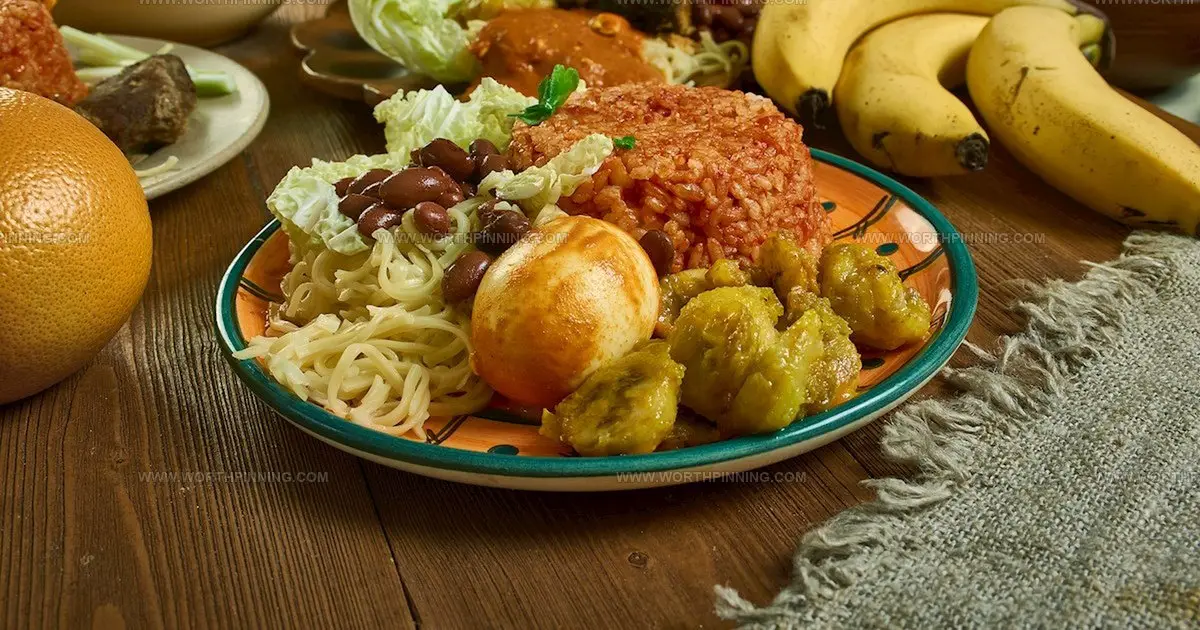
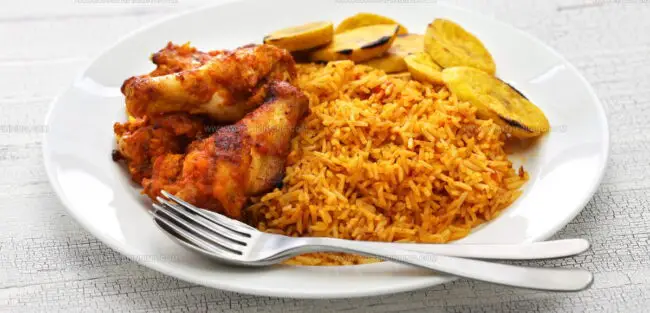
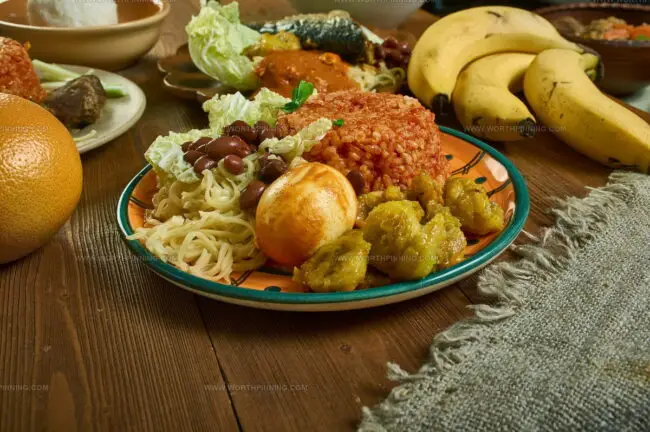
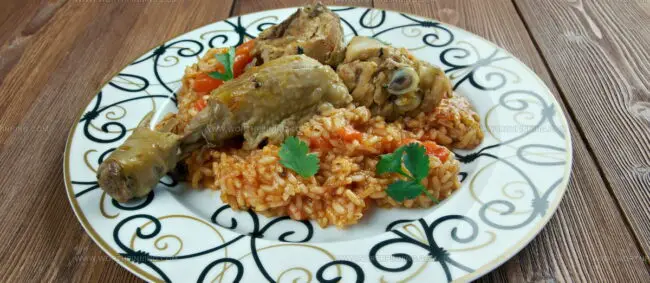
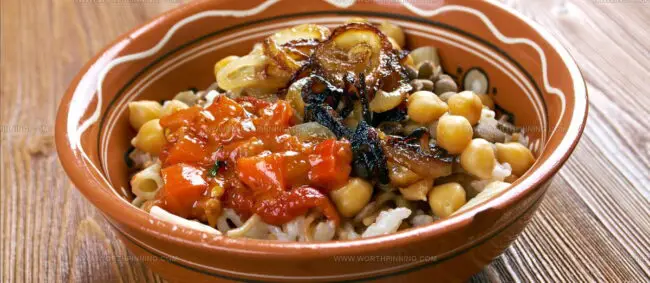
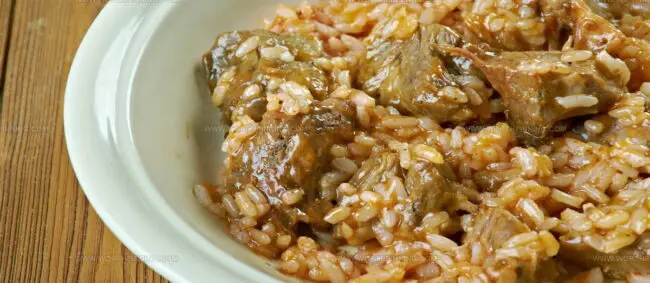

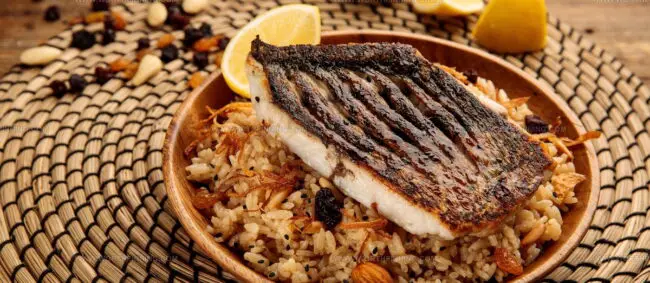

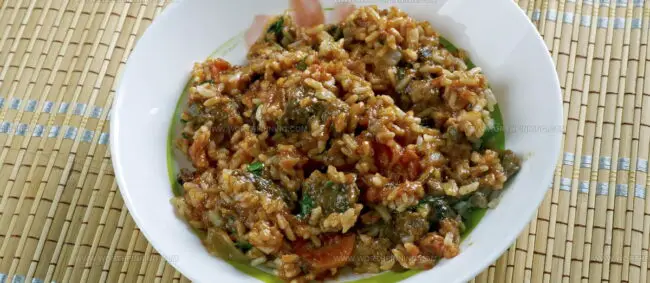
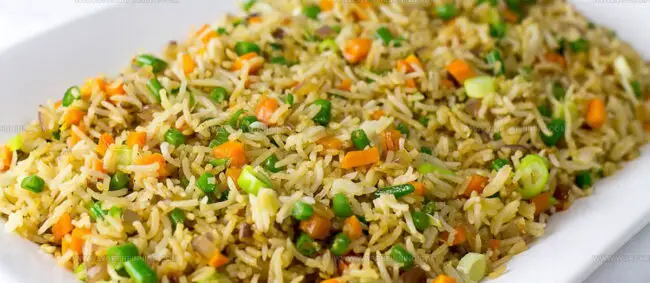
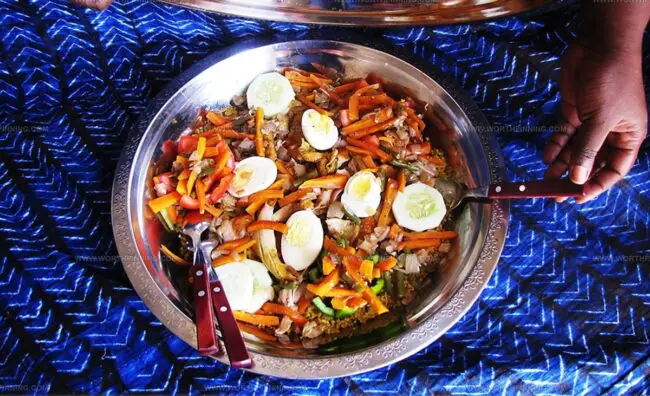
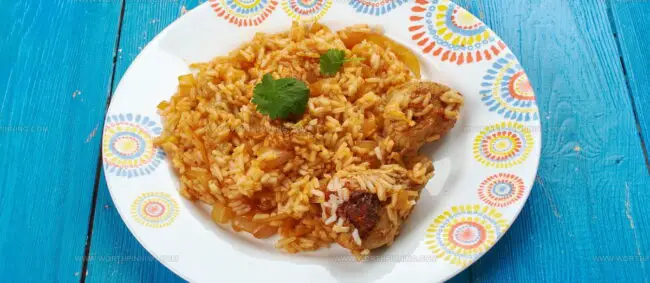
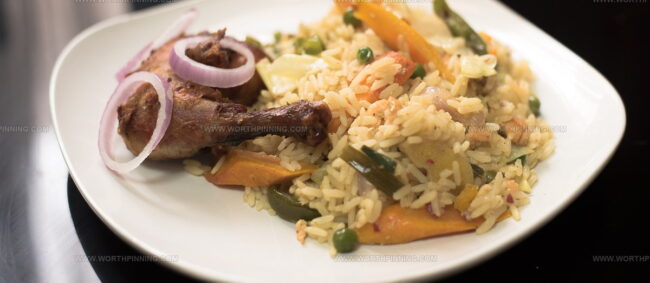
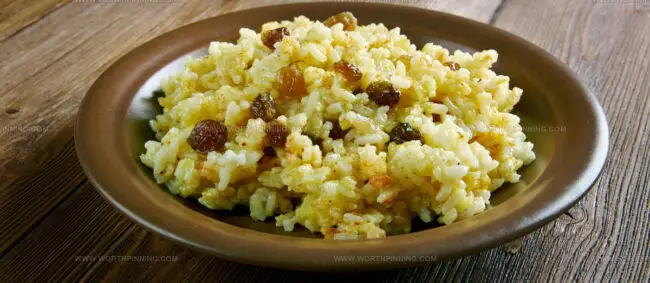
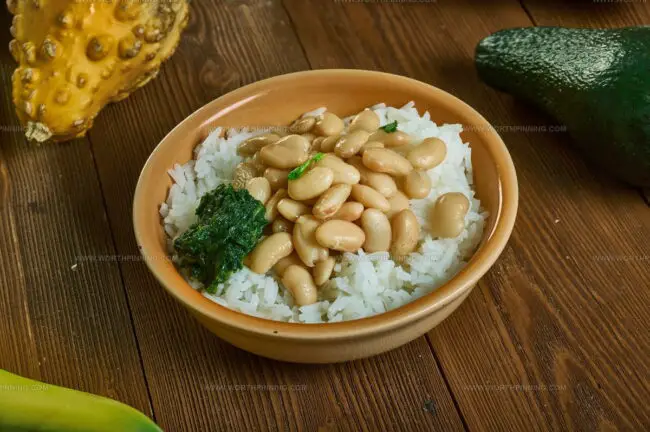
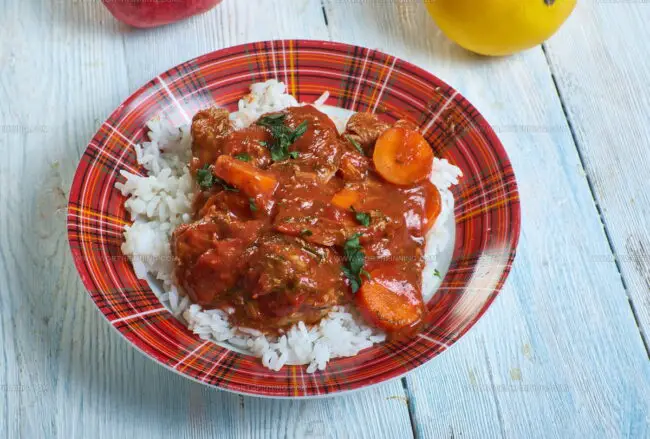
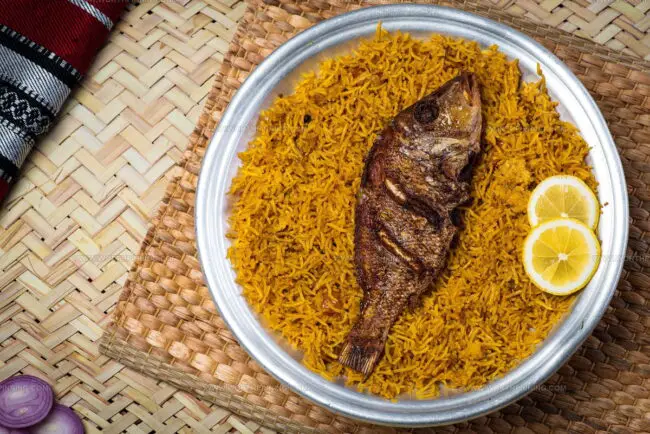
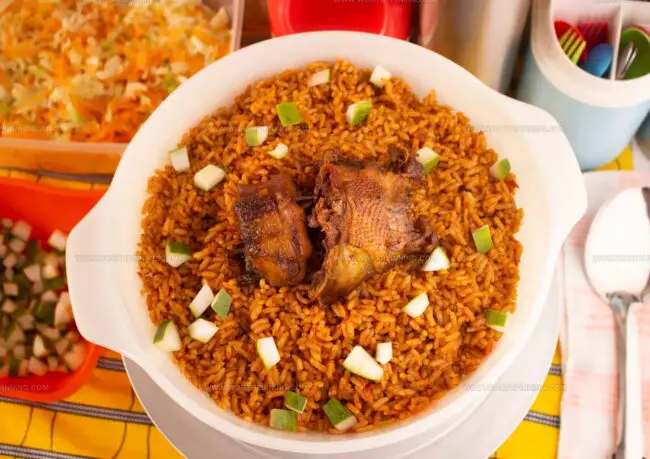
Ethan Miller
Founder & Lead Content Writer
Expertise
Education
Portland Community College
Culinary Institute of the Pacific
Ethan’s culinary journey began in his grandmother’s kitchen, where he first learned to play with flavors and ingredients. With formal training in culinary arts and a deep love for international cuisines, Ethan’s goal is to share the joy of cooking with others.
He believes food is all about creativity and bringing people together, one meal at a time. When he’s not experimenting with new dishes, he enjoys hiking in the Oregon wilderness and discovering fresh, local ingredients.